Passport characteristics and price
| Characteristic | Model | |
|---|---|---|
| LA-H688 | LA-F638 | |
| Power consumption, W | 12 | eight |
| Color temperature, K | 2700-6500 | |
| Color rendering index, Ra | ≥95 | |
| Luminous flux, lm | 500 | 400 |
| Power (external adapter) | Input 100-240V, 50/60Hz, output 15V, 1.2A | Input 100-240V, 50/60Hz, output 15V, 0.6A |
| Warranty, years | 2 | |
| Additional functions |
|
|
| Weight (without power adapter), g, our measurement | 1376 | 928 |
| Retail offers | ||
Description lamp Remilicht LA-H688
The lamp is sold in a small flat colorfully decorated corrugated cardboard box. The box is equipped with a plastic handle, which is offset from the geometric center so as to be above the center of gravity.
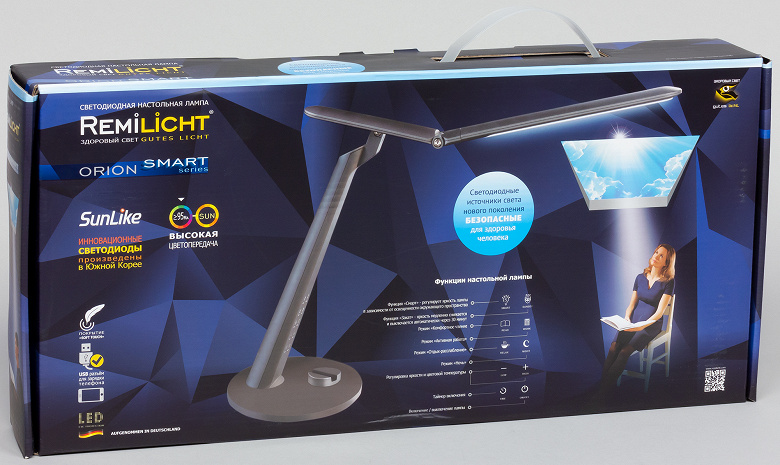
There is a lot of information on the sides of the box – images of the lamp itself, main features, functions, etc. There is even a spectrum of this lamp in comparison with the spectrum of a “normal lamp”.
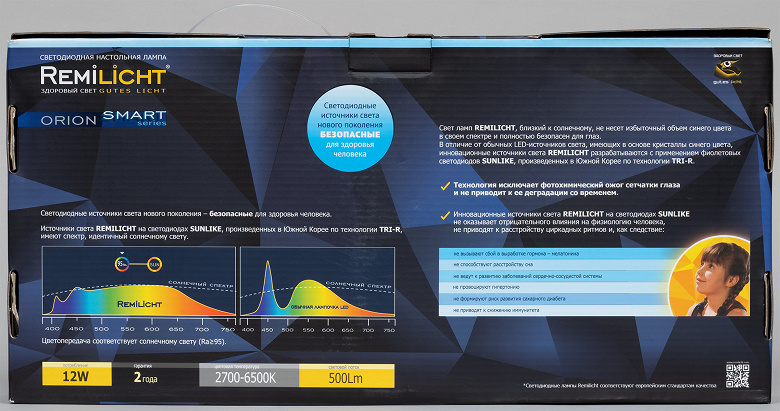
To protect and distribute the contents, corrugated cardboard inserts, a box of the same material, pimply and ordinary plastic bags are used. The package includes a lamp on a stand, a round base, a phone stand, a power adapter and a user manual in Russian, combined with a warranty card.
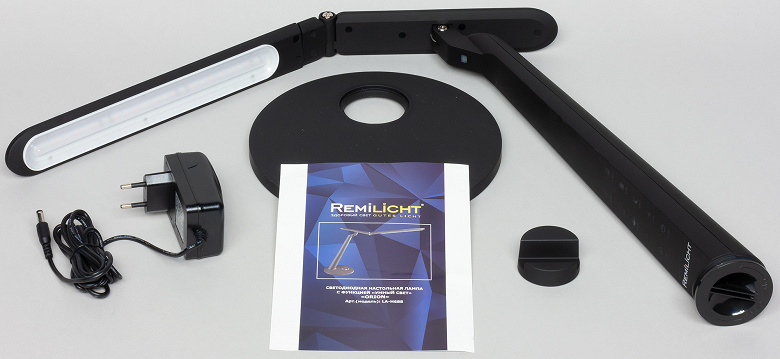
Before use, the lamp must be assembled: unscrew the plug at the end of the stand, insert the stand into the hole on the base and screw the plug.
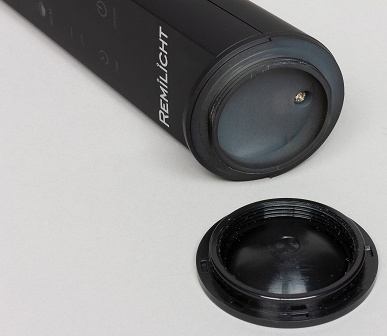
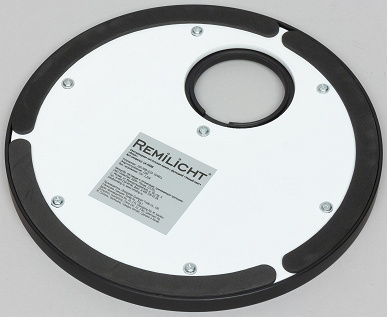
We get the device ready for use, it remains to connect the power and insert the adapter into the outlet.
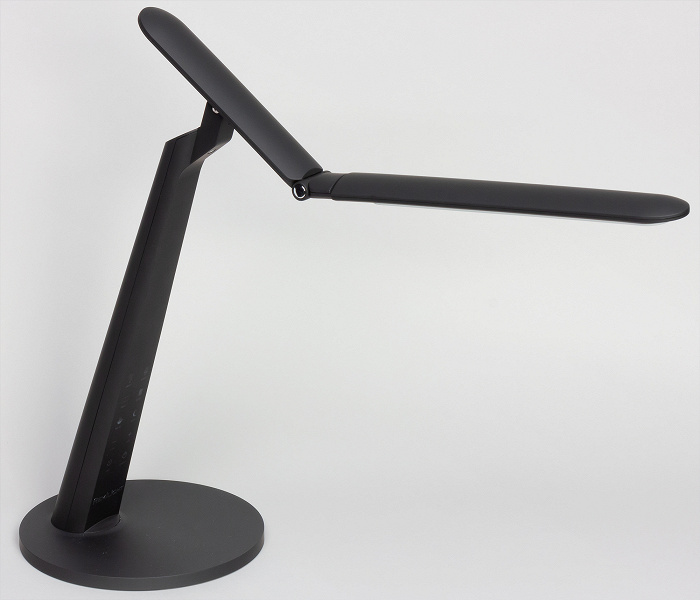
The length of the cable from the adapter is 1.8 m.
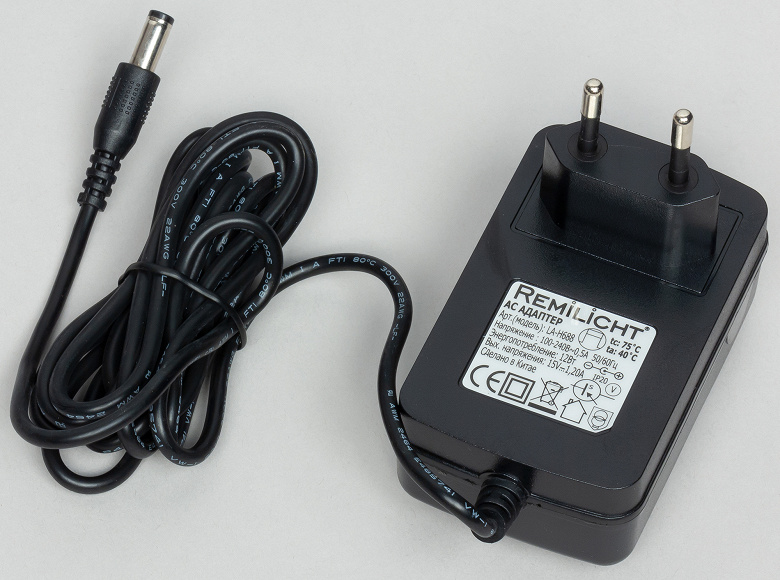
The base of the lamp is heavy (924 g), it is made of steel (probably cast iron) and has a durable white coating. Base diameter 200 mm. From above, the base is covered with a plastic casing, and strips of porous elastic plastic are glued on the bottom so that the lamp does not slide on the table and scratch its surface. The design of the lamp is mainly plastic, but galvanized steel is used in nodes that experience heavy loads, such as hinges.
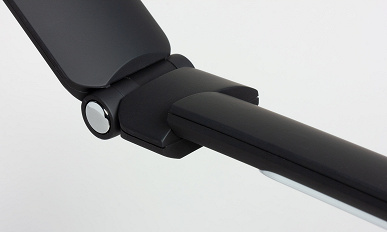
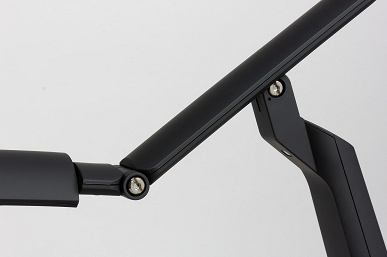
Outside, the plastic parts have a black “Soft touch” coating that is pleasant to the touch (in some places with white patches, so in the photos below it’s not dust).
The lamp stand can be rotated almost 90 degrees to the right and left relative to the base.
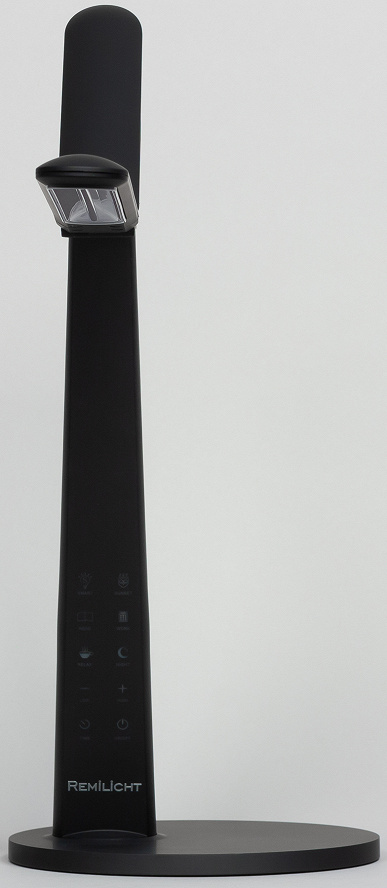
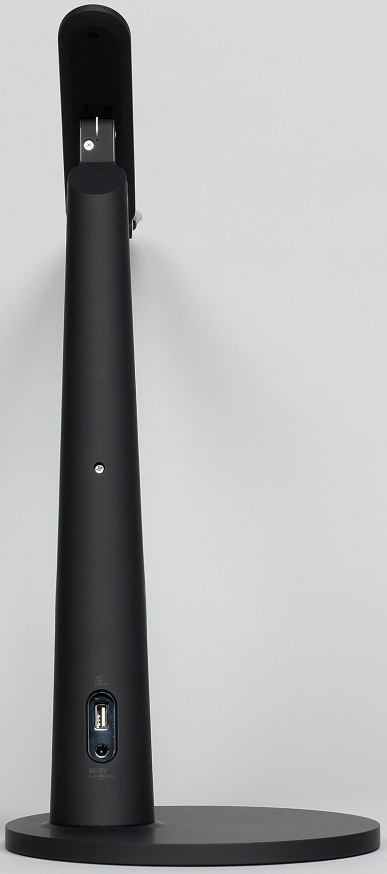
The first hinge allows the first knee to tilt up 19 degrees and down 36 degrees relative to the horizontal position, the range of the second hinge is 88 degrees up and 98 degrees down, and the third hinge allows the last knee with a diffuser to rotate by ±30 degrees around the longitudinal axis. So many degrees of freedom allow you to adjust the direction of the light flow within a fairly wide range and, within a small range, the height of the light source relative to the plane of the table (with a horizontal position of the diffuser, this is from 334 to 420 mm).
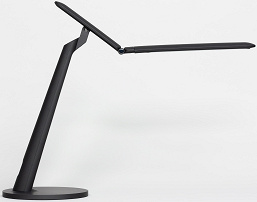
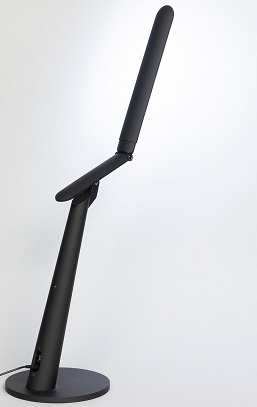
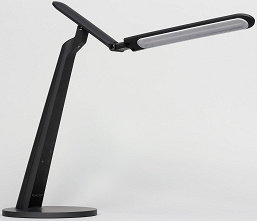
The back of the stand has a power connector and a USB connector that can be used to power external devices such as electronic watches or to charge phones.
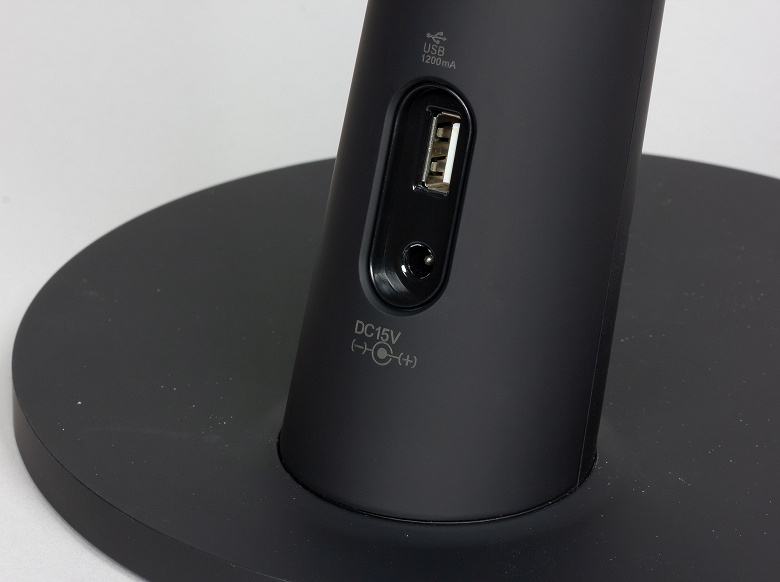
In the second case, the phone can be placed on a small stand, which, thanks to a magnet, is held on top of the lamp base.
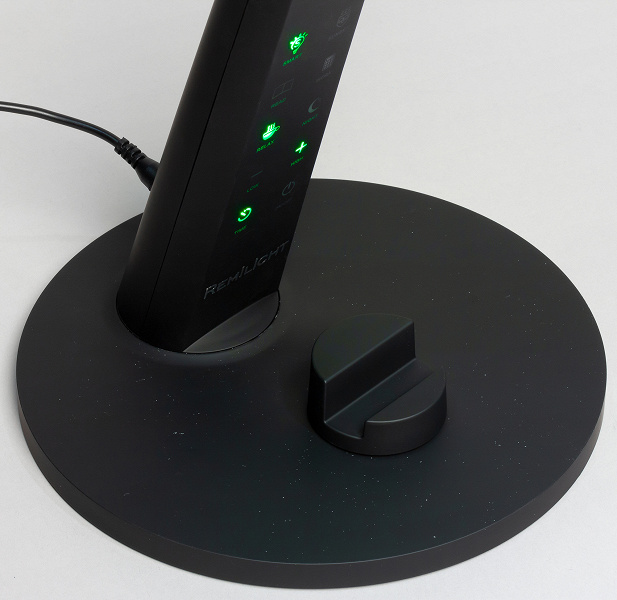
The current strength indicated next to the connector is 1200 mA, and the voltage is also indicated in the manual – 5 V, by modern standards this is not much, but it is quite enough for night charging.
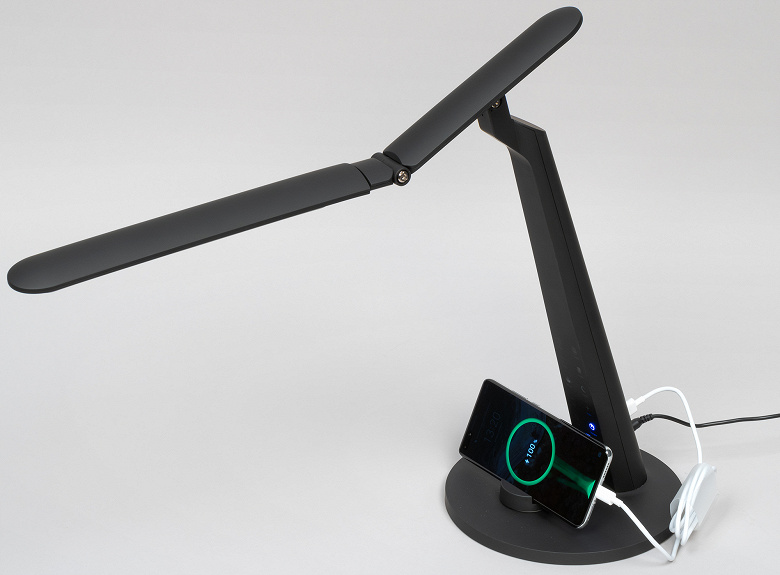
There are several touch buttons on the front edge of the rack. The icons on the buttons are highlighted in green, except for the power button – its icon is highlighted in blue. When the lamp is connected to the network, but turned off, the power icon glows, which makes it easy to turn on the lamp in complete darkness. Further, only the icons of the currently active functions or the “+” or “-” icons are highlighted in green when the brightness adjustment limits are reached. There is a slight ergonomic miscalculation here, since in the unlit state the icons are pale and the buttons are difficult to recognize, especially in the semi-darkness.
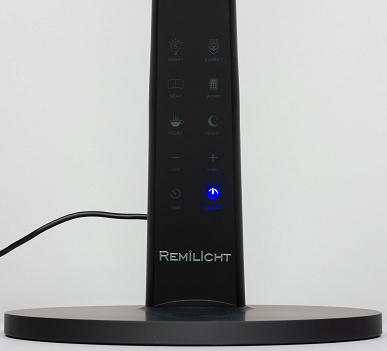
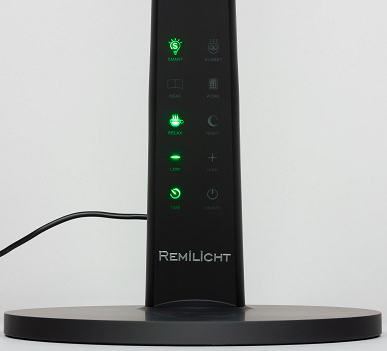
At the top of the rack there is a light sensor directed downwards onto the table surface illuminated by the lamp. The readings of this sensor are used during the operation of the mode with automatic brightness control.
Light is emitted by white LEDs arranged in a row, the color temperature of which differs through one, while clearly only two types of LEDs are used. The line of LEDs is covered with a light diffuser made of white translucent plastic.
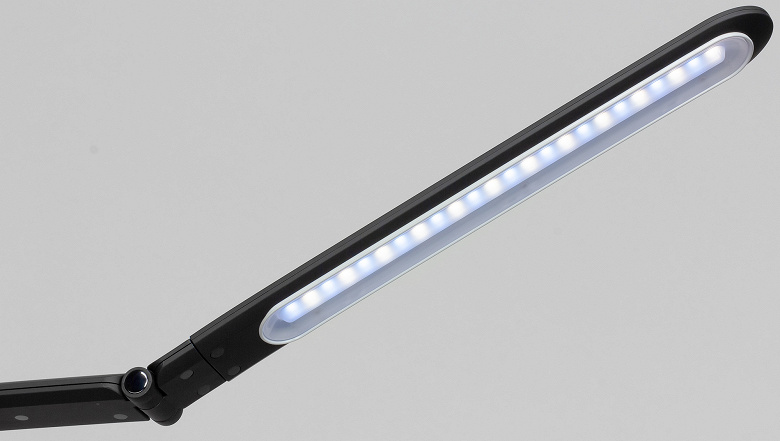
Perhaps we have considered all the main design features of the Remilicht LA-H688 lamp, let’s move on to the next participant in our testing.
Description lamp Remilicht LA-F638
The design of this lamp can be summed up in three words: potted plant.
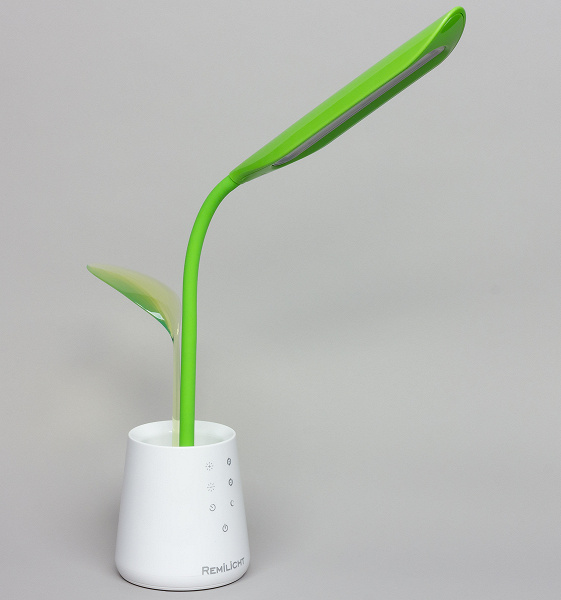
The lamp is packed in a large box. In a large one, since the lamp is delivered almost assembled. The design and information richness of the box design is generally the same as that of the box from the previous lamp, even the handle is also off-center. In this case, polyethylene foam inserts, a corrugated cardboard box and plastic bags are used to protect and distribute the contents.
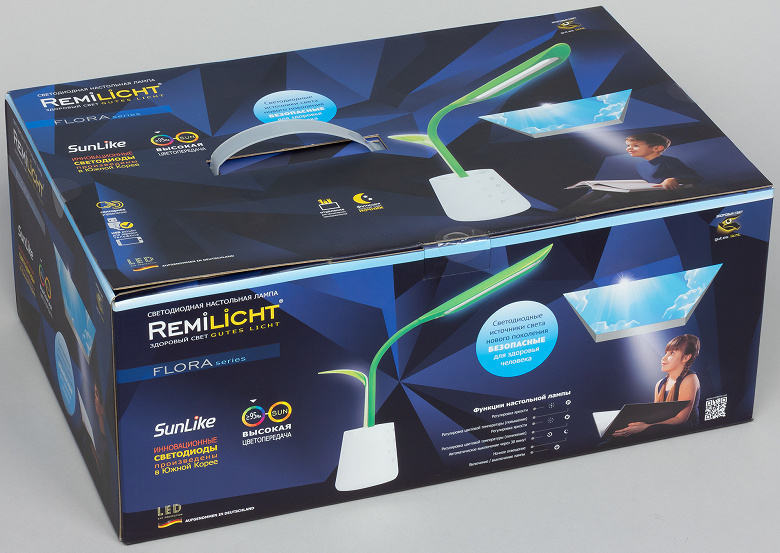
The package includes a lamp, a night light diffuser sheet, a power adapter and a user manual in Russian, combined with a warranty card.
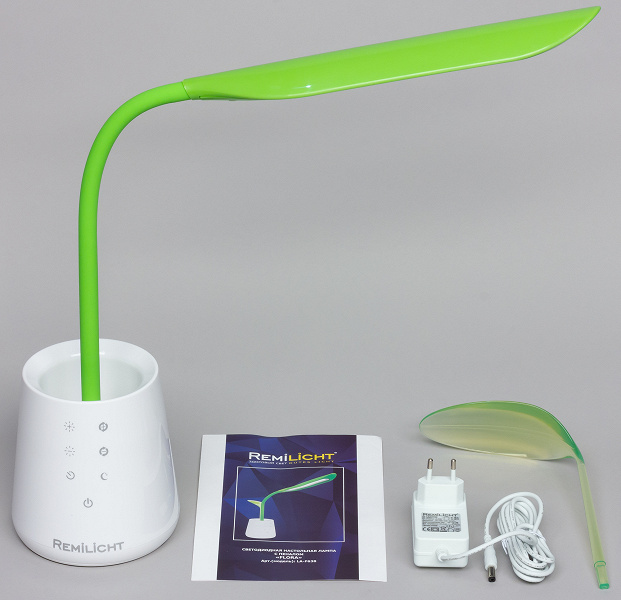
The user will still have to do something: insert the diffuser sheet of the night lamp into the nest intended for it in the base-pot.
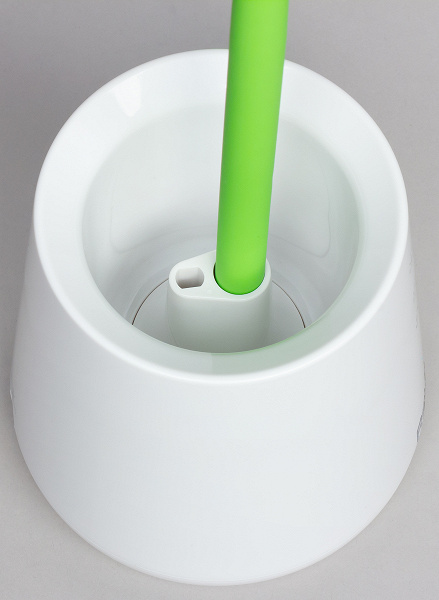
Then connect the cable from the adapter to the connector on the bottom of the lamp, and insert the adapter into the socket. The length of the cable from the adapter is 1.8 m.
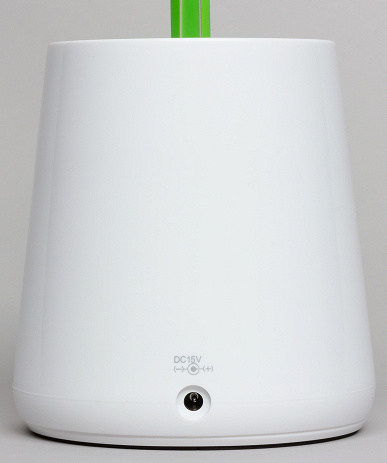
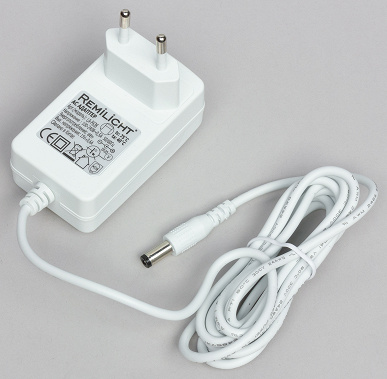
The LEDs are mounted in a green hard plastic case with a mirror-smooth surface.

This part of the lamp is mounted on a cylindrical stand, which is covered with a shell made of a tube made of elastic plastic with a pleasant to the touch surface. The height of the visible part of the stand is approximately 30.5 cm. In the height range of somewhere from 15 to 29.5 cm, the stand is inelastically flexible, which allows you to change the angle of inclination of the lighting part of the lamp, slightly adjust its height relative to the plane of the table (with a horizontal diffuser, this from 260 to 354 mm) and rotate along the column axis.
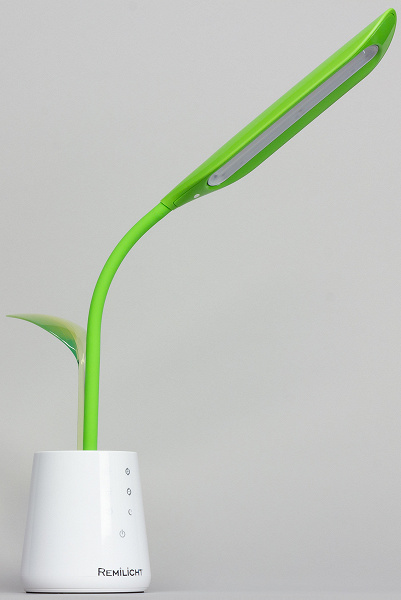
The base-pot is not heavy, it is made of white plastic, mainly with a mirror-smooth surface. The largest diameter of the base is 128 mm, and the height is 138 mm. From below, strips of porous elastic plastic are glued to the base so that the lamp does not slide on the table and scratch its surface.
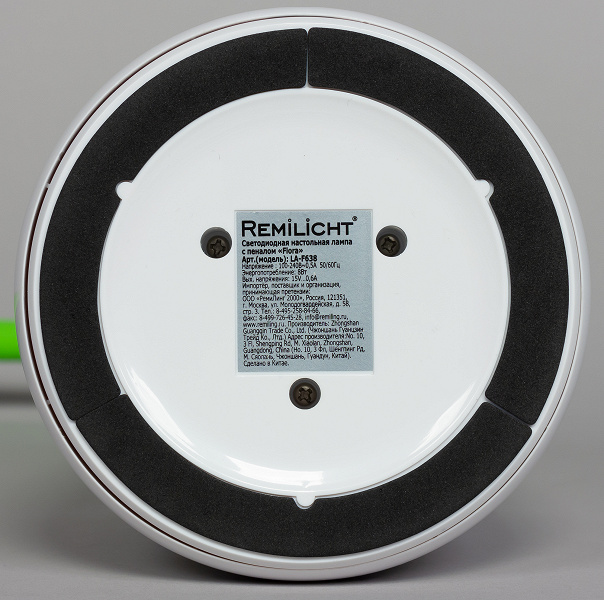
A deep recess on top of the base carries a functional load – it can accommodate any stationery small things in the form of pens, pencils, scissors, etc.
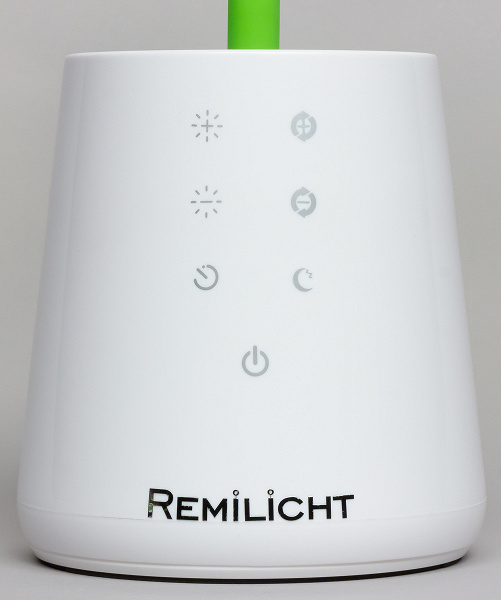
There are several touch buttons on the front of the base, indicated by silver icons. Even the power button is not backlit. However, at night it is enough to put your palm on the area with the buttons, and something will turn on, or a night lamp, or the main light, or both. The “+” and “-” buttons surrounded by rays change the brightness of the main light, and the “+” and “-” in the arrows change the color temperature, the button with the clock icon activates a 30-minute timer to turn off (you need to hold it pressed until the leaf is blinks twice), the moon button turns on the nightlight, and the power button turns on / off the main light.
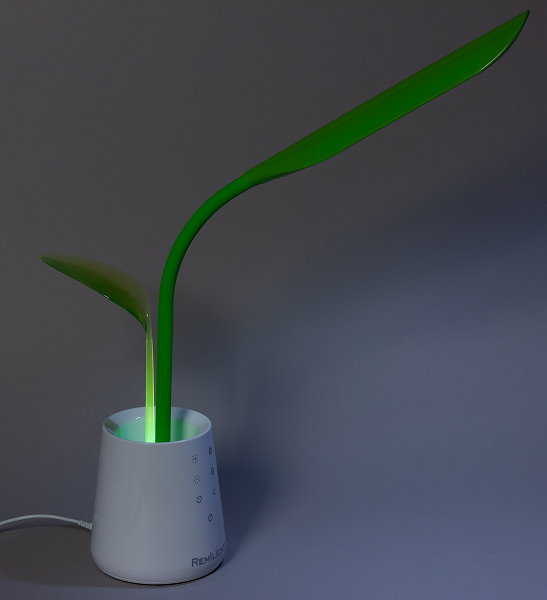
The night light is implemented as a backlight for the end of the leaf stem, made of transparent, but slightly hazy and tinted light green plastic. The nightlight mode illuminates the inside of the base and stem of the leaf with a gradual decrease in brightness from the beginning of the stem to the end of the leaf.
The design of the lighting part of the lamp is the same as the previous one. Light is emitted by white LEDs arranged in one row, the color temperature of which differs through one, while only two types of LEDs are used. The line of LEDs is covered with a light diffuser made of white translucent plastic.

Testing
The manufacturer writes that these lamps use “safe for human health” LED light sources. This is due to a decrease in the intensity of blue light in the spectrum of lamps.
Since there is no UV radiation in the spectrum of conventional lamps, even those that use a blue emitter and a yellow phosphor in LEDs, only a bright light before going to bed remains of the possible harm to a person. The bottom line is that in bright light a person suppresses the production of melatonin (a hormone that controls a person’s fatigue and his need for sleep), which can lead to disruption of the daily ( circadian ) rhythm and other unpleasant consequences. The brighter the light and the more light in the blue region (400-500 nm), the greater the suppression of melatonin production. Therefore, reducing the intensity of blue will slightly increase the safe level of brightness. Also, psychologically rather than physiologically, light with a high color rendering index is more pleasing to the eye when the objects illuminated by the lamp have a natural color for them. This concludes the discussion of safety for human health, leaving all other statements on the conscience of the lamp manufacturer Remilicht.
Colorimetric characteristics
| Mode | Color temperature , K | Deviation from the blackbody spectrum , ΔE | Color rendering index , Ra | Relative illumination , maximum / minimum,%% | Power consumption , maximum / minimum, W |
|---|---|---|---|---|---|
| Remilicht LA-H688 | |||||
| Reading | 3850 | ten | 94 | 100/10 | 12.6/2.47 |
| Work | 4450 | 6.5 | 94 | 77/4.6 | 9.74/1.68 |
| Rest | 3360 | 12 | 95 | 75/0.46 | 9.74/1.17 |
| Night | 2600 | 5.5 | 97 | 49/0.15 | 6.88/1.13 |
| Remilicht LA-F638 | |||||
| Default | 3800 | 8.8 | 95 | 100/3.6 | 7.75/0.80 |
| cold light | 5850 | 2.9 | 96 | 53/1.9 | 4.17/0.66 |
| Warm light | 2600 | 4.3 | 98 | 48/1.8 | 4.18/0.66 |
The color temperature values, ΔE and Ra, as well as the spectra below are given for the maximum brightness, however, the differences from the characteristics for the minimum brightness are insignificant.
If the lamp LA-H688 is not disconnected from the mains, then the choice of the current mode and the brightness level for each mode are remembered. After disconnecting from the mains and turning on, the lamp turns on in the brightest mode – Reading – and for all modes the maximum brightness is set. In standby mode, the lamp consumes 1.05 W
We present the spectra for different modes (maximum brightness). First, for comparison, let’s show the spectrum of a “normal” LED lamp from the previous test , for which Ra (85) is the maximum among the participants in that test:
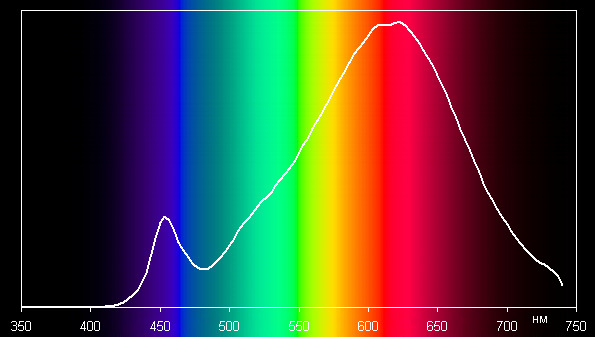
Let us pay attention to a well-defined peak in the region of approximately 450 nm.
Now the spectra for the Remilicht LA-H688 lamp:

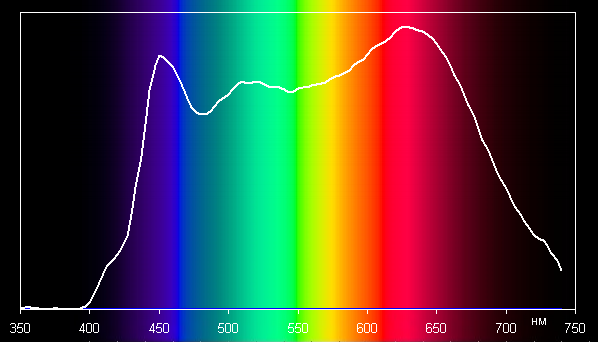
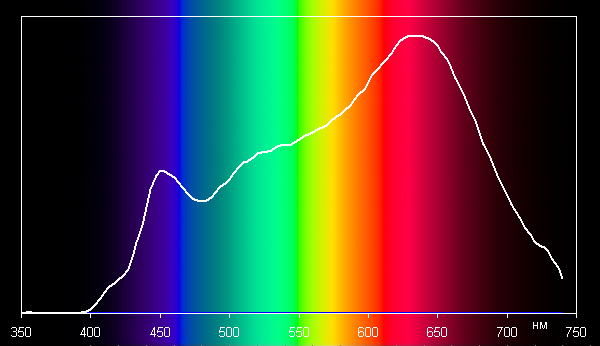
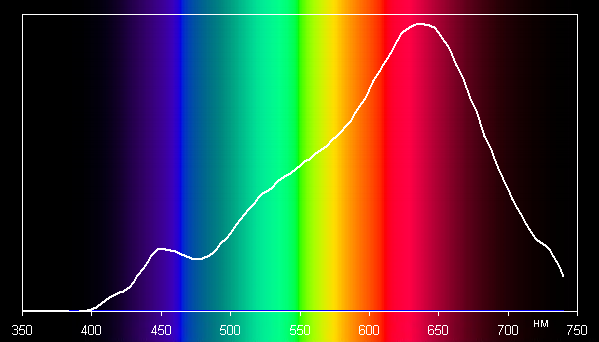
It is correct to compare the spectrum of a “normal” lamp and the spectrum of a Remilicht LA-H688 lamp for the Night mode, in which the color temperature (2600 K) is close to that of a “normal” lamp (2520 K). It can be seen that the peak in the blue region for LA-H688 is wider and generally weakly expressed. Note that only in the Night mode one type of LEDs is lit, in the other three modes both types of LEDs are lit simultaneously.
If the lamp LA-F638 is not disconnected from the mains, then the color temperature settings and the brightness level are memorized. After disconnecting from the mains, the lamp turns on in the brightest mode. The night light (leaf illumination) turns on regardless of the main light and adds 0.48 watts to the consumption. In standby mode, the lamp consumes 0.5 W
Spectra for Remilicht LA-F638 lamp:
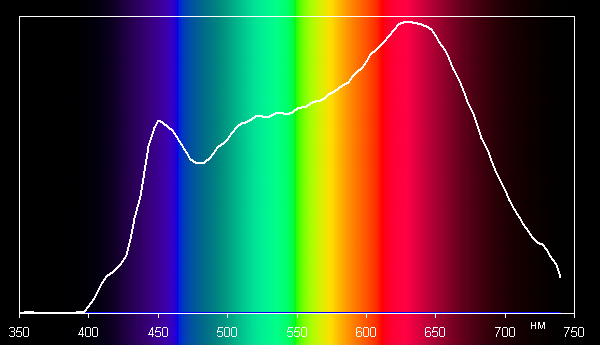
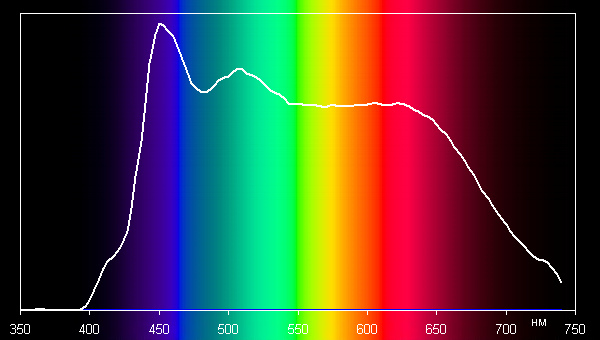
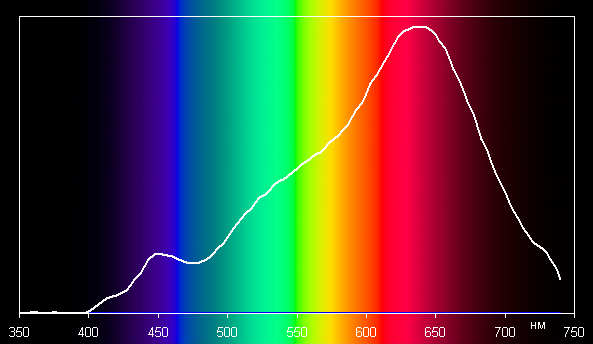
The spectra are similar to those of the LA-H688 lamp. Most likely, they use the same LEDs. only in LA-F638 2×8 pcs., and in LA-H688 2×12 pcs. LEDs. Note that in the case of the LA-F638 lamp, in the maximum color temperature (Cool light) mode, only the “cold” LEDs are lit, and in the minimum color temperature (Warm light) mode, only the “warm” LEDs are lit.
Brightness characteristics
To evaluate the distribution of illumination over the plane that the lamps illuminate, we took photographs of how the lamps illuminate a white background. The width of the background (the horizontal size of the photographs below) is approximately 1 m. The lighting unit of the lamps was raised to the highest possible position while maintaining horizontality. Selected photos with maximum exposure, but which still do not overexposure. Photos are converted to gray scale. They are paired with images obtained after converting photographs to white and black colors with a threshold of 127 – they clearly allow you to evaluate the geometry of the illumination area.
Remilicht LA-H688:
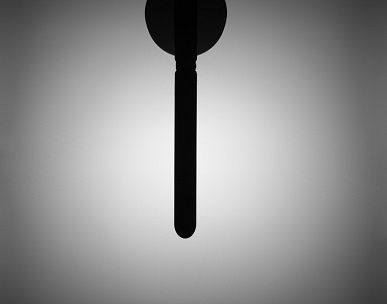

Remilicht LA-F638:
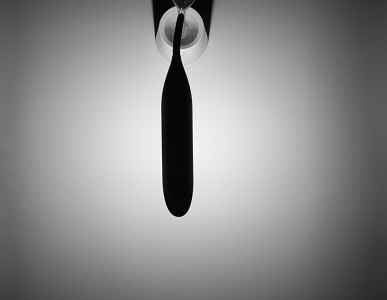
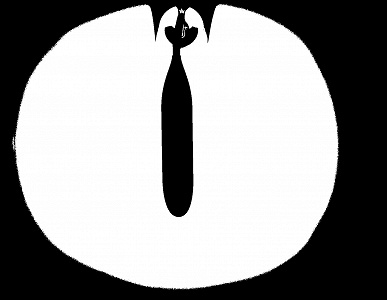
It can be seen that in both cases, the area with the same illumination is close to a circle, and, it is slightly wider in the direction perpendicular to the lighting block. Illumination on the plane of the table can be represented in numbers after measurements made with a luxmeter (the conditions are described above; the values are obtained after the lamp has been operating at maximum brightness for at least 30 minutes):
| Model | Illumination in the center, lx |
|---|---|
| Remilicht LA-H688 | 665 |
| Remilicht LA-F638 | 650 |
Just for orientation, we indicate that according to GOST R 55710-2013 “Lighting of workplaces inside buildings. Norms and Methods of Measurement”, in libraries in reading areas, the minimum allowable value of average illumination should be 500 lux.
The Remilicht LA-H688 lamp begins to shine into the eyes almost immediately, as soon as the eyes fall below the lower point of the lighting unit, while the diffuser of the Remilicht LA-F638 lamp is located slightly above the lower edge of the housing, so the eyes begin to see the bright edge of the diffuser, being slightly below the bottom points of the lighting block. This is subject to the horizontal location of the lighting unit. Thanks to the LEDs located in a row, the shadow from objects is significantly blurred in the direction along the row of LEDs. In the direction across – the shadow is contrasting.
In auto-adjustment mode, the automation of the Remilicht LA-H688 lamp tries to maintain the brightness of the space in front of the lamp at a level of about 90% of the maximum brightness of the white surface illuminated only by this lamp. Obviously, there is no special margin for increasing illumination, so the automation works more downward. For example, if a bright external light is turned on in the room, then in this mode the brightness of the lamp is significantly reduced.
Dynamic characteristics
By the criterion of visible or detectable flicker, the lamps are safe. In the case of Remilicht LA-H688 at maximum brightness in the brightest Reading mode and in Night mode, there is no brightness modulation. In other modes or when the brightness is reduced, modulation appears, but its main frequency is very high, about 20 kHz, so flicker is not visible and it is not detected in the stroboscopic effect test (the vertical axis of the graphs below is illumination, the horizontal axis is time).
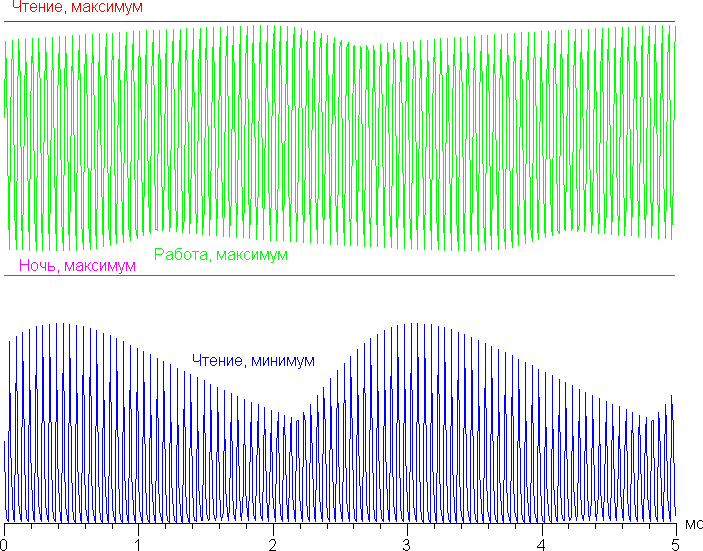
Along with the main modulation frequency, in some cases a second frequency appears – about 370 Hz – but its relative amplitude is small, as a result, there is also neither flickering nor the possibility of a stroboscopic effect.
In the case of the Remilicht LA-F638, the nature of the modulation is different, but its frequency is also quite high (about 5.3 kHz), so there is also no flicker or stroboscopic effect:
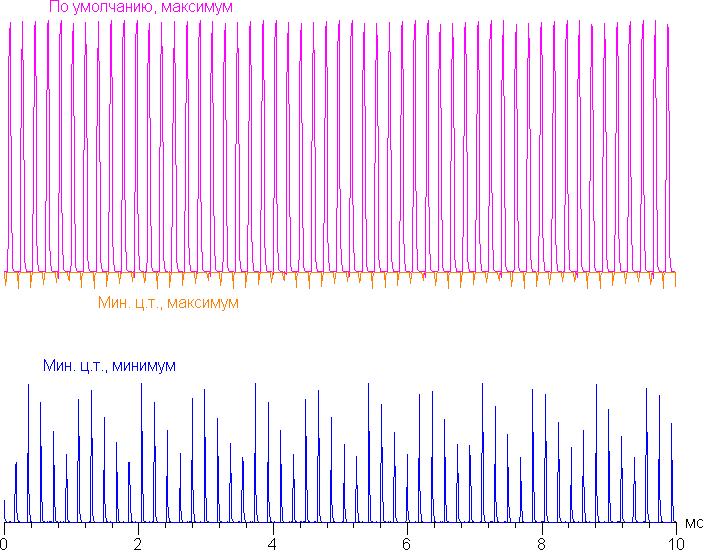
When the Remilicht LA-H688 lamp is turned on, the brightness grows smoothly, but quickly, it reaches its maximum in about 850 ms, there are no steps in the dependence of brightness on time (one burst is not counted). For the eyes, this growth is pleasant.
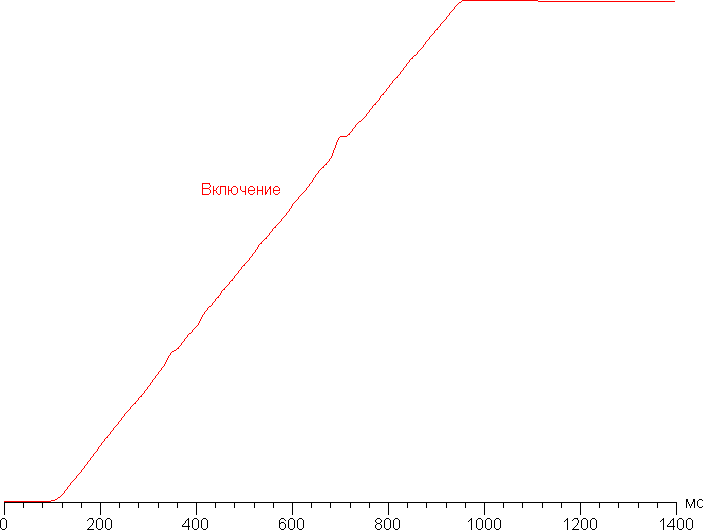
The lamp turns off immediately. Adjusting the brightness while holding the buttons also occurs smoothly and without steps. The brightness changes from minimum to maximum (or vice versa) in about 3.6 s:
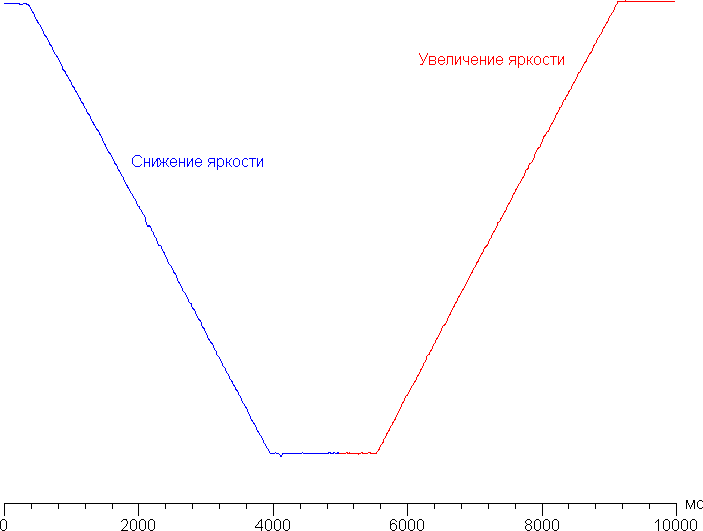
In the Sunset mode, the brightness gradually decreases until it is turned off, the visible gradation of the brightness change is present only at the very end for several seconds:

The timer shutdown, if set, does indeed occur after 30 minutes.
The Remilicht LA-F638 lamp turns on and off with a smooth increase in brightness:
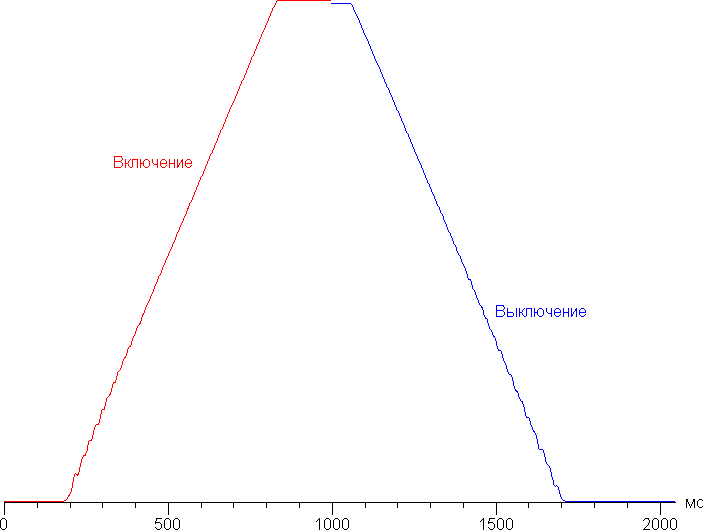
The maximum brightness is reached, and the shutdown occurs in about 640 ms, there are no steps visible to the eye in the change in brightness. When you hold the buttons, the brightness also changes smoothly and without visible steps. The process in one direction takes about 2.5 s:
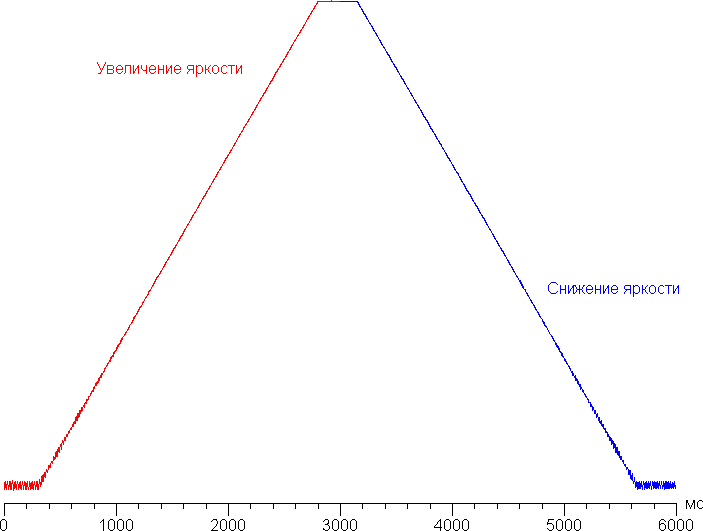
When the color temperature changes, the brightness changes smoothly (and hence the color temperature too):
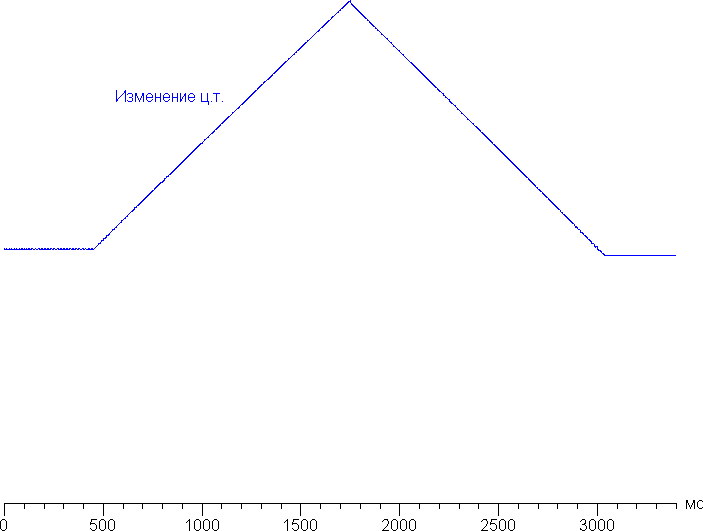
The change in color temperature from maximum to minimum (or vice versa) occurs in about 2.6 seconds.
The timer shutdown, if set, occurs after 28 minutes.
Heat
After prolonged operation of the Remilicht LA-H688 lamp at maximum brightness and with a load connected to the USB port (see below), the lamp heats up moderately (room temperature is approximately 23 degrees). Maximum temperature – on the lighting unit (picture from above):
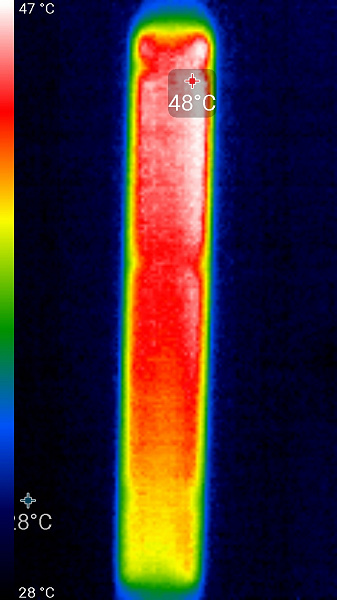
The case got warmer around the USB port, but the heating is negligible:
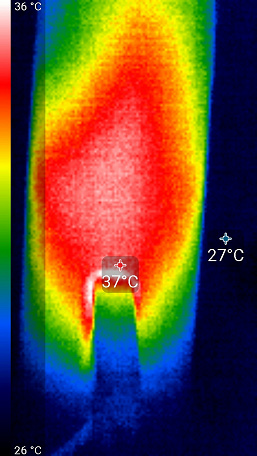
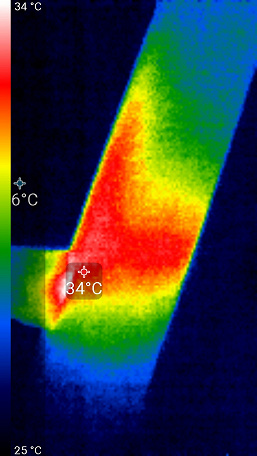
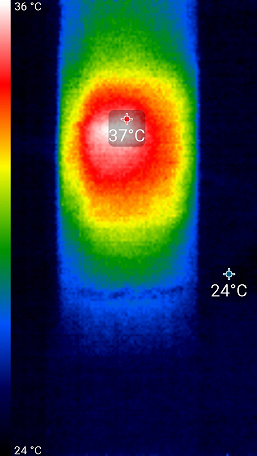
The case of the power supply unit heated up to only 36 degrees maximum.
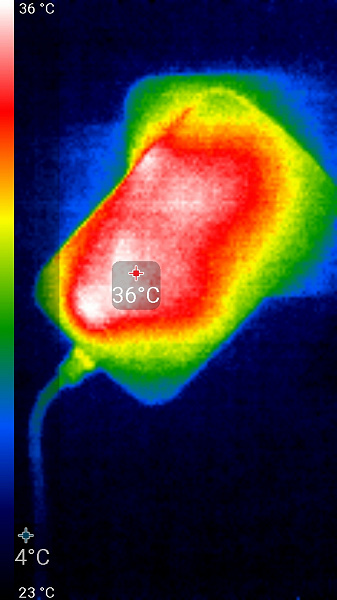
In the case of the Remilicht LA-F638 lamp, which also worked for a long time at maximum brightness, the lighting unit heated up to only 36 degrees.
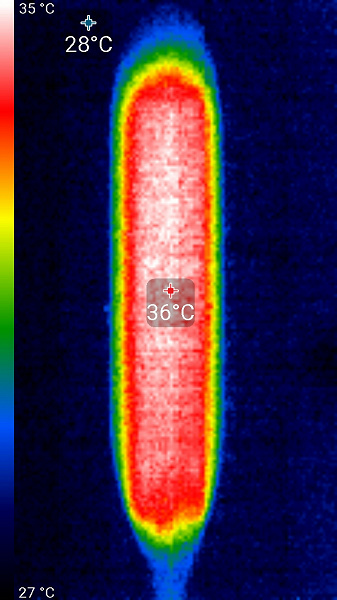
Chassis – 39 Degrees Max (Front):
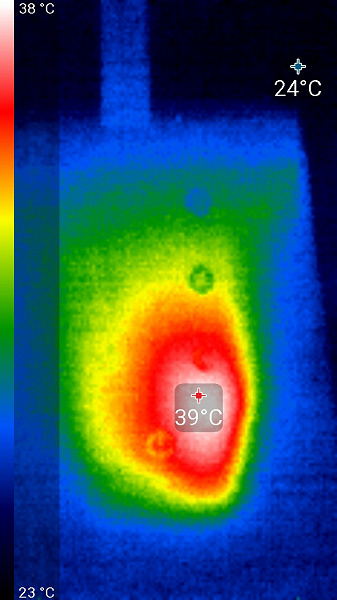
Power supply – the same 36 degrees:
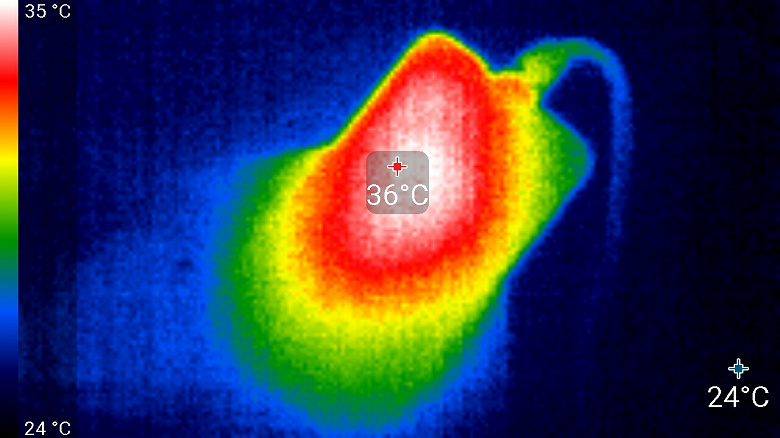
Additional tests
A simple load in the form of resistors connected in series with a resistance of approximately 5 and 10 ohms showed a good load capacity of the USB port on the Remilicht LA-H688 lamp – at a current of 1.45 A, the voltage was 5.04 V, and the ripple was negligible (range of order 0, 1 V at a ripple frequency of 150 kHz):
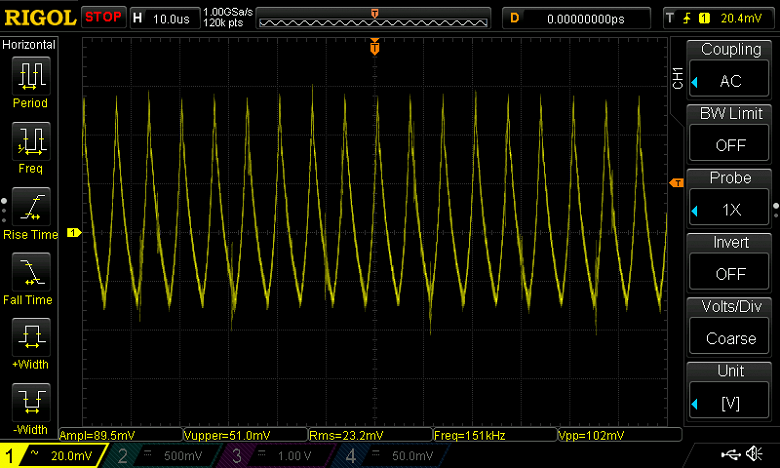
findings
Remilicht LA-H688 and LA-F638 table lamps have a spectrum with a slightly pronounced blue peak, which to some extent allows us to consider these lamps safer than lamps with conventional LEDs. However, regardless of this fact, the lamps are distinguished by an interesting design and a number of additional functions, such as dimming, choosing a color profile or adjusting the color temperature, a sleep timer, an auto dimming mode, and Sunset modes in the case of LA-H688 and night light in the case of LA -F638. Additionally, the LA-H688 lamp can work as a charger for a smartphone, and any office trifle can be stored in the LA-F638. The disadvantages include a number of small ergonomic miscalculations associated with the operation of the touch buttons. However, this does not spoil the overall positive impression of a strict office lamp and a plant lamp.





